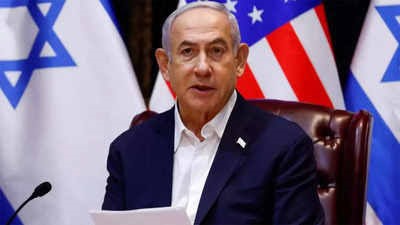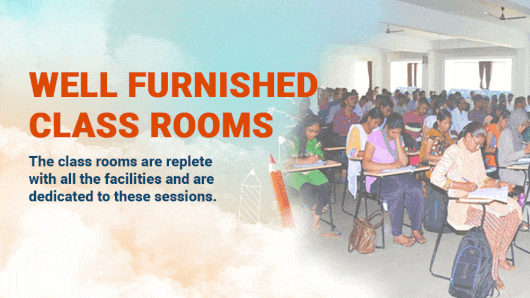NETANYAHU’S WAR CALCULUS IN IRAN: A DIGITAL AGE PERSPECTIVE
Syllabus:
GS-2: India and its Neighbourhood, Bilateral Groupings & Agreements, Groupings & Agreements Involving India and/or Affecting India’s Interests
WHY IN THE NEWS?
Israel launched a full-scale aerial assault on Iran targeting nuclear facilities, military infrastructure, and key leadership on June 13, 2025. The offensive, led by Prime Minister Benjamin Netanyahu, has raised global concerns about Israel’s ultimate goal—dismantling Iran’s nuclear program or pushing for a broader geostrategic reshaping of West Asia. This conflict highlights the importance of digital literacy and technology integration in modern warfare and diplomacy, much like how online education and digital learning are reshaping the learning environment worldwide, impacting both urban and rural students.

STRATEGIC OBJECTIVES
- Program Destruction: Israel’s declared intent is to eliminate Iran’s nuclear programme, especially targeting sites like Natanz and Isfahan, aiming to prevent Tehran from enriching uranium to weapons-grade levels. This approach mirrors the importance of digital literacy in today’s world, where knowledge and skills can be as powerful as physical assets, much like how digital learning resources are transforming educational landscapes for both urban and rural students.
- Command Decapitation: Initial strikes included the assassination of Iran’s top generals, attempting to disrupt the Iranian military’s chain of command and weaken its retaliatory capacity. This strategy reflects the significance of digital skills in modern leadership and organizational structures, similar to how teacher training in digital tools enhances the learning environment.
- Symbolic Dominance: By bombing civilian infrastructure, media headquarters, and military facilities, Israel signals unquestioned regional air superiority, asserting its strategic prowess. This demonstration of power can be likened to digital fluency in the information age, where mastery of digital learning resources can provide a competitive edge in various learning environments.
- Pre-emptive Doctrine: Consistent with the Begin Doctrine, which justifies preventive strikes on hostile nuclear sites, Israel aims to forestall any existential threat from Iran. This approach parallels the importance of digital readiness in anticipating and addressing potential challenges in both government schools and online education platforms, particularly for rural students.
- Geopolitical Signaling: The offensive sends a message to other regional actors and Iran-backed proxies—Gaza, Hezbollah, and Syria—that Israeli deterrence remains uncompromising. This communication strategy reflects the significance of digital literacy in modern diplomacy and international relations, much like how digital proficiency is crucial in today’s global educational landscape for both urban and rural students.
MILITARY LIMITATIONS
- Equipment Constraints: Israel lacks strategic bombers and bunker-buster munitions capable of neutralizing Iran’s deeply buried Fordow enrichment facility. This limitation underscores the importance of technology integration in military capabilities, similar to how internet connectivity and digital tools are crucial for enhancing the learning environment in both urban and rural education settings.
- Partial Success: While Natanz and Isfahan were hit, IAEA confirmed that Fordow remains intact, limiting Israel’s ability to completely dismantle the program. This outcome highlights the challenges of achieving comprehensive learning outcomes in complex situations, akin to the difficulties in ensuring educational equity across diverse regions, including for rural students.
- Iran’s Retaliation: Despite Israeli superiority, Tehran responded with 400 missiles and drone strikes, demonstrating its enduring strike capabilities. This retaliation showcases the importance of digital skills in modern warfare, much like how digital proficiency is becoming increasingly crucial for students in both rural and urban areas.
- Civilian Toll: Continued war has claimed at least 24 Israeli lives, disrupted air travel, and shuttered Ben Gurion Airport, impacting Israel’s internal stability. This situation reflects the broader impacts of conflict on educational access and learning opportunities, similar to how disruptions can affect school attendance and mobile learning initiatives in various learning environments.
- War Duration: Without swift success, a protracted conflict looms, challenging Netanyahu’s political capital and exposing Israel to sustained Iranian attacks. This scenario underscores the need for long-term strategies in both military and educational contexts, including sustained efforts to bridge the gender digital divide and improve reading proficiency through digital means for all students, including rural students.
REGIME CHANGE CALCULATIONS
- Stated Intention: Netanyahu hinted at regime change as a viable outcome, even suggesting the assassination of Ayatollah Khamenei could end the conflict. This approach reflects the transformative potential of digital literacy in reshaping societal structures, similar to how online education is revolutionizing traditional learning environments.
- Public Messaging: Initially, he urged Iranians to rise against their regime; yet, bombing civilian areas has undermined local dissent by rallying people around the government. This situation mirrors the challenges of community engagement in digital literacy initiatives, particularly in bridging the gap between rural and urban students.
- Backfire Risk: The attacks validate Iran’s propaganda about external threats, reinforcing nationalistic sentiment rather than inciting rebellion. This outcome highlights the importance of understanding socioeconomic factors in both geopolitical and educational contexts, including the challenges of digital inclusion in diverse communities and learning environments.
- Leadership Elimination: Despite decapitation tactics, Iran’s state machinery and retaliatory capacity remain functional, undermining regime-toppling hopes. This resilience parallels the enduring nature of established educational systems, emphasizing the need for comprehensive strategies in implementing digital learning and improving arithmetic skills for all students, including rural students.
- Uncertain Outcome: A state collapse is unpredictable—possibly triggering regional chaos, refugee crises, and the rise of extremist non-state actors. This uncertainty reflects the challenges of predicting learning outcomes in complex educational environments, particularly when implementing new digital learning resources across diverse populations, including rural students.
DIPLOMACY DILEMMA
- Peace Feelers: Iran reportedly sent diplomatic signals via Gulf Arab states, expressing willingness to restart talks if Israel halts its assault. This approach mirrors the importance of public-private partnerships in addressing educational challenges, such as improving internet connectivity for online education in various learning environments.
- US Role: Former President Donald Trump indicated openness to negotiations, using Israeli aggression as leverage, though pushing for Iran’s complete nuclear disarmament. This strategy reflects the role of policy initiatives in shaping educational landscapes, including efforts to enhance digital literacy and provide quality education through technology for all students, including rural students.
- Mutual Distrust: Iran is unlikely to negotiate under fire, while Israel views diplomacy as a diversion from its hardline objectives. This situation parallels the challenges of bridging the digital divide in educational contexts, particularly between rural and urban students in different learning environments.
- Missed Opportunity: The offensive began just before the sixth round of US-Iran talks, suggesting diplomacy was never Israel’s core intent. This missed chance reflects the importance of timing in both diplomatic and educational initiatives, including the implementation of digital learning programs in various learning environments.
- Fragile Window: Any cessation in hostilities might create a brief window for talks, but continued bombing weakens the credibility of diplomatic overtures. This delicate situation underscores the need for consistent effort in both conflict resolution and digital literacy programs, emphasizing the importance of sustained educational resources and teacher training for all students, including rural students.
AMERICAN INVOLVEMENT
- Strategic Silence: Trump maintains that America is not part of the war, though Israeli sources claim a “green light” was given before the attack. This ambiguity reflects the complexities of international partnerships in both geopolitical and educational contexts, including collaborations for improving digital learning resources in various learning environments.
- Calculated Distance: The US warned Iran against targeting American troops, while carefully avoiding direct involvement to limit escalation. This approach mirrors the challenges of balancing involvement and autonomy in educational initiatives, particularly in implementing digital tools across diverse learning environments for both urban and rural students.
- Pressure Tactics: Israel is lobbying hard for US military participation, particularly for precision strikes and to support regime change efforts. This lobbying reflects the importance of advocacy in shaping both military and educational policies, including efforts to enhance digital inclusion and mobile learning opportunities for all students, including rural students.
REGIONAL AND GLOBAL IMPLICATIONS
- Power Vacuum: An Iranian collapse could reshape West Asia, embolden Israel’s regional agenda, and expand US-led strategic influence. This potential shift parallels the transformative impact of digital literacy on societal structures, including the potential for online education to reshape traditional learning environments for both urban and rural students.
- Proxy Network: Iran’s support to militant proxies—from Hezbollah to the Houthis—may weaken, but could also prompt retaliatory asymmetrical warfare globally. This network dynamics reflect the complexities of addressing the urban-rural divide in educational access, particularly in providing equitable digital learning resources across different learning environments.
- Arab Reaction: Most Arab governments have issued muted condemnations, indicating either tacit approval or inability to counter Israeli assertiveness. This response mirrors the challenges of achieving consensus in educational policy initiatives, especially in implementing widespread digital literacy programs across diverse learning environments.
- Energy Concerns: The war threatens oil supply chains through the Strait of Hormuz, potentially spiking global energy prices and causing economic instability. This situation underscores the importance of digital infrastructure in maintaining economic stability, much like how internet connectivity is crucial for sustaining online education and mobile learning initiatives in various learning environments.
- International Law: Israel’s actions raise questions on sovereignty violations, civilian targeting, and the limits of self-defense under international norms. These legal considerations parallel the importance of ethical considerations in digital literacy initiatives, including efforts to ensure educational equity and bridge the gender digital divide in diverse learning environments for both urban and rural students.
Conclusion
Netanyahu’s Iran offensive straddles military ambition, diplomatic opportunism, and regional realignment. However, unclear objectives, logistical constraints, and fierce retaliation have complicated the endgame. Whether Israel seeks to deter, destroy, or destabilize, the long-term consequences for West Asia’s peace and global order may be far-reaching and profoundly destabilizing. This complex situation underscores the need for comprehensive strategies that integrate digital literacy, technology, and diplomatic skills to address modern geopolitical challenges. Just as quality education and digital learning are transforming societies, the resolution of conflicts in the digital age will require innovative approaches that leverage educational resources, digital tools, and a deep understanding of both urban and rural perspectives to foster lasting peace and stability. These approaches must consider the diverse learning environments and the unique needs of all students, including rural students, to ensure equitable access to digital literacy and educational opportunities.
Source: TH
Mains Practice Question
Q. “Critically examine Israel’s recent military actions against Iran in light of international law, regional security, and nuclear non-proliferation norms. What could be the long-term geopolitical ramifications of such unilateral offensives in West Asia? How might digital literacy and technology integration influence future conflict resolution and diplomatic efforts in the region?”








